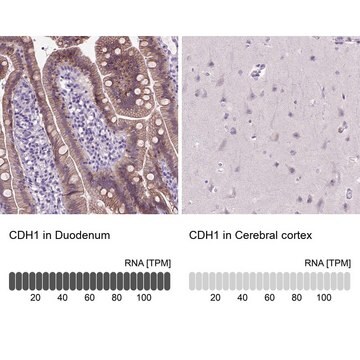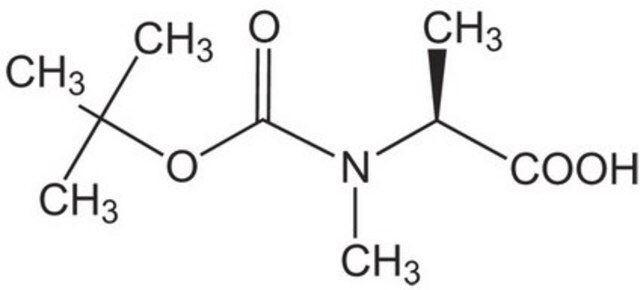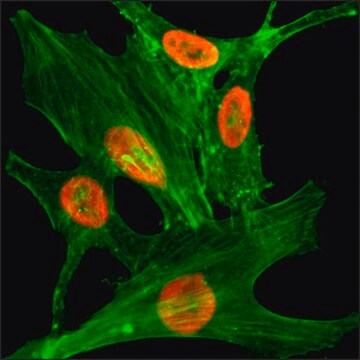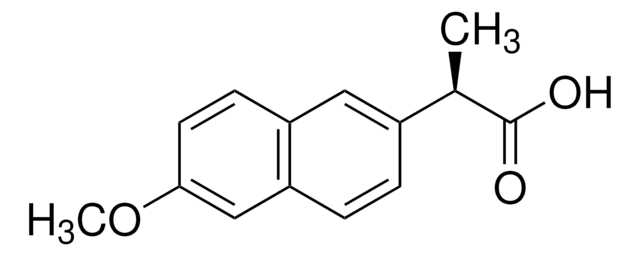ABN1662
Anti-STRA6
from rabbit
Synonim(y):
Stimulated by retinoic acid gene 6 protein, Retinoic acid-responsive protein
Wybierz wielkość
Wybierz wielkość
About This Item
Polecane produkty
pochodzenie biologiczne
rabbit
Poziom jakości
forma przeciwciała
unpurified
rodzaj przeciwciała
primary antibodies
klon
polyclonal
reaktywność gatunkowa
mouse
opakowanie
antibody small pack of 25 μL
metody
flow cytometry: suitable
immunohistochemistry: suitable (paraffin)
immunoprecipitation (IP): suitable
western blot: suitable
izotyp
IgG
numer dostępu NCBI
numer dostępu UniProt
Warunki transportu
ambient
docelowa modyfikacja potranslacyjna
unmodified
informacje o genach
mouse ... Stra6(20897)
Opis ogólny
Specyficzność
Immunogen
Zastosowanie
Western Blotting Analysis: A representative lot detected STRA6 in Western Blotting applications (Berry, D.C., et. al. (2012). Mol Cell Biol. 32(19):3851-9).
Western Blotting Analysis: A representative lot detected STRA6 in 293T cells transfected with an empty vector or pCMVTag2b-Stra6 (Courtesy of Dr. Noa Noy).
Flow Cytometry Analysis: A 1:100 dilution from a representative lot detected STRA6 in HT-29 cells.
Immunohistochemistry Analysis: A 1:250-1,000 dilution from a representative lot detected STRA6 in mouse testis and human liver cancer tissues.
Neuroscience
Jakość
Western Blotting Analysis: A 1:1,000 dilution of this antibody detected STRA6 in NIH3T3/L1 Adipocytes.
Opis wartości docelowych
Postać fizyczna
Przechowywanie i stabilność
Handling Recommendations: Upon receipt and prior to removing the cap, centrifuge the vial and gently mix the solution. Aliquot into microcentrifuge tubes and store at -20°C. Avoid repeated freeze/thaw cycles, which may damage IgG and affect product performance.
Inne uwagi
Oświadczenie o zrzeczeniu się odpowiedzialności
Nie możesz znaleźć właściwego produktu?
Wypróbuj nasz Narzędzie selektora produktów.
Kod klasy składowania
12 - Non Combustible Liquids
Klasa zagrożenia wodnego (WGK)
WGK 1
Temperatura zapłonu (°F)
Not applicable
Temperatura zapłonu (°C)
Not applicable
Certyfikaty analizy (CoA)
Poszukaj Certyfikaty analizy (CoA), wpisując numer partii/serii produktów. Numery serii i partii można znaleźć na etykiecie produktu po słowach „seria” lub „partia”.
Masz już ten produkt?
Dokumenty związane z niedawno zakupionymi produktami zostały zamieszczone w Bibliotece dokumentów.
Active Filters
Nasz zespół naukowców ma doświadczenie we wszystkich obszarach badań, w tym w naukach przyrodniczych, materiałoznawstwie, syntezie chemicznej, chromatografii, analityce i wielu innych dziedzinach.
Skontaktuj się z zespołem ds. pomocy technicznej








